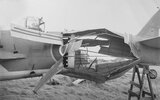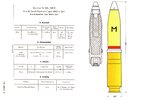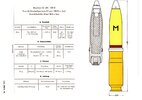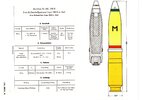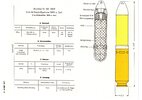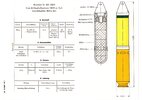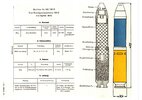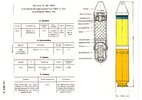Hey BMG,
The Germans operated three 30mm (3cm as they would say) weapons.
The:
Mk-101
Mk-103 and the
Mk-108
Both the 101 and 103 fire a 30x184/B round.
The main difference being, that the ones used in Mk-101 are percussion primed, whilst the ones fired by the 103 use an electrical primer.
The Mk-108 fires a 30x91/RR, electically primed, round.
The Mk-108 is a very short, stubby even, weapon, that does not generate high muzzle velocity. The 101 and 103 on the other hand, both are long barreled weapons, thus projectile velocity is quite high.
The Mk-108 was mainly employed in an air/air capacity, in which blast effect was considered a more important factor than penetration.
Both Mk-101 and 103 were used as multi-role weapons in both air/air and air/ground roles (the 101 however, saw most action in an air/ground capacity. It was soon replaced by the lighter and more reliable Mk-103).
For both Mk-101 and 103 a plethora of rounds /l oadings excisted, including the HE and mine-shells as used in the Mk-108.
Besides these quite a large amount of AP types came into use, ranging from simple APHE-T, to APHEI-T (with "Kappe" and "Haube") and "Hartkern" (tungsten carbide cored) rounds.
The AP types (projectile wise) are usually hard(er) to find and demand steep prices, as do the rare, lacquered steel, 101 percussion primed casings.
Pristine 101/103 casings being hard to find eitherway. They often have a gash down the neck (from pulling the shells).
Mk-108 casings in good condition are fairly commonly found, both online and at shows.
Besides the weapons that saw action, several experimental types, like the Mk-213 and Mk-212, reached an advanced state of development. For these guns experimental rounds may be found, though these are considered quite rare. For the Mk-212 one may encounter a long "blind" (unfused / inert filler) mine shell.
Pictures excist of cutaways of Hollow-charge projectiles; these may however have been made from post war replica's done on the basis of wartime drawings.
Casings for both rounds are exceedingly rare.
